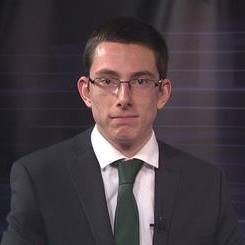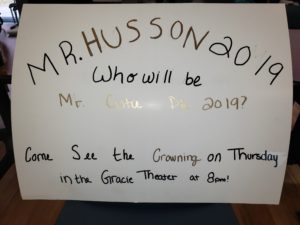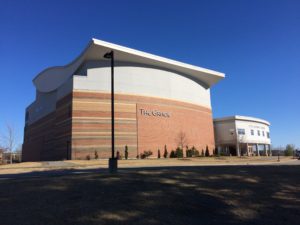By. Nathan Cram
Our society is moving at such a fast pace. Every day of our lives something different happens around us that people like to hear about. Back in the early stages of technology, there was one thing that everyone gathered around the TV set to watch, whether it be in the morning, or late in the evening. This program was the daily news broadcast. If we heard about something going on near our home or neighborhood, we would turn on the TV and watch the news to find out what the story was. The news allows us to find out about all of the things that are going on in our local communities, statewide, and even nationally. The news is very important because things are always going on and naturally people want to know about everything that is happening. So they flip on the news and they have all they need right on their TV screen.
In order for the news cast to be shown on TV, there needs to be anchors, producers, cameramen and many other people in order for a news broadcast to take place. There is a lot that goes into a news cast that people cannot see on their TV screen. The New England School of Communications is a very well known communications school that specializes in many different majors such as journalism, video production, marketing communications, and many more. Students learn some very useful skills that will help them make the change from school to the real world work force. There campus where the students, along with help from professors, put together their own news program. This is called the NESCom Connection. This news cast is just like any news cast you would see on any of the local news stations you see. Only this one uses their own students. This programs allows the students to act as anchors, whether forecasters, and even sports anchors in a similar news environment that you would see on TV.
Jeffrey Hope is one of the main journalism advisers at NESCom. He is also one of the main producers of the NESCom Connection. He helps the students when it comes to putting the show together and making sure that it runs as smooth as possible. He wants each news cast to be just as professional and similar to a real news cast as possible. “It’s a thirty minute TV news cast designed to act exactly the same as a local thirty minute TV news cast. It has all of the same elements.” Now it may be student run, but they still try and use the same type of news outline like you would see on TV. “There are similar segments such as A block, B block, sports, whether, and then we end generally on a kicker. It has one to two anchors, a sports person, somebody does weather and then whenever we can we fit in some live segments.”
When it comes to the connection, there are a lot of skills that students can learn. These types of skills are very useful when it comes to getting jobs in the news business. Hope wants students to take advantage of these opportunities. “Students will try everything. We would do little practice sessions. Then they practice writing, do some anchoring, try the whether, even do a live shot. Then in later semesters students will be responsible for doing one whole show by themselves.” These are indeed college courses that are designed to help students further their knowledge when it comes to the world of news. But these skills are good things to learn early so that students know what they are doing when they are put in real world situations. Also anyone is able to participate in the connection. It is usually only for NESCom students due to some of the basic classes needed in order to know how to work in this type of environment.
In a student run news cast, people may thinks that the stories used are only ones found on the campus. The connection is actually a little bit different. Hope says that the stories they use can come from just about anywhere. “They can literally be anywhere. We rely heavily on CNN stories.” The connection is very similar to a real news cast because they may use some stories that can normally be seen on the daily news. These stories are normally put together by the producers of the show. A lot of people may know what a reporter is, but they don’t really know what they do. “I think the number one thing is writing. Writing and organizing. You have to be very good at being able to organize a story and take care of all the little details that make a half hour news cast happen. So it’s a lot of coordinating with other people, but writing is probably the number one skill a student will need”, says Hope.
Now in college there may be some clubs or group organizations that may take up a lot of students time. This may affect their school work because they spend so much time taking part in certain club activities. At NESCom, they work based on how much the student is willing to put into it. “If a student doesn’t have very much time and they just want to participate in just a little bit, maybe help out on a live shot. We can figure that out. If a student decides they want to be a producer, then they really are going to want to dedicate some time to it”, says Hope. This allows for students to be very flexible with their time. They may have some spare time and decide that they want to try anchoring, or even producing. The connection team really bases how they work around their students. It gives them the opportunity to explore some new things and learn some skills that may be useful to them in whatever their field of choice may be.
NESCom takes great pride in the work that they do and a lot of the success is thanks to the students, as well as the teachers, that dedicate their time to make the Connection happen. Nick Blaszczak is a sports journalism student at NESCom and he is part of the connection team. He has done just about everything there is to do when it comes to the news show. He has anchored, done live reporting, and even covered the weather. But Nick says that he likes sports the best. “I’ve recently completed all of the roles on the connection and sports anchoring is easily my favorite. As a child, I grew watching ESPN on a daily basis to get insight on all the news, highlights, and scores from around the sporting universe.” Since he is going to school for sports journalism, Nick sees himself possibly going on this career path. “Ever since I taped my first (real) sports segment as a high school student, I knew I wanted to pursue a career in sports broadcasting.”
It is never easy starting something new. The news broadcasting field is something that we see and deal with just about every day of our lives. Nick thinks that starting early will help people set a good foundation for what they want to do in their field of choice. “Start getting involved as soon as possible. The more time that you have to work on mistakes the better off you will be in the field.”
Video credits to NESCom Journalism on YouTube




